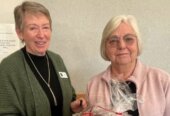
Janine Krippner
I love a good action movie, and if they have an eruption or some other geological disaster as a plot line I am in.
With field work at Mount Doom (Ngāuruhoe) last week and making my way through Hobbiton with a bunch of other enthusiastic walkers and runners, our evening activity was watching the Lord of the Rings movies, extended editions. Mount Doom is basically its own character in the films, with impressive ash plumes (not smoke), very fluid lava flows, and massive molten rocks (ballistics) in the final scene. This is a common movie eruption style, a mix of explosive (big ash plumes, pyroclastic flows) and effusive (runny lava flows).
It makes for good movie scenes. Is it realistic? No, not at all. The general type of magma that produces runny lava flows is different to the types that produce those big explosive eruptions, and they do not erupt at the same time.
Speaking of pyroclastic flows – the very hot, rapid avalanches of volcanic rock and gases, they are usually far too fast to outrun and far too hot to walk away from. Looking at you, Rings of Power and Jurassic World: Fallen Kingdom.
The significant difference between the magma types is the chemistry: the runnier basalt magmas have a lower silica content while the thicker or more viscous andesites and rhyolites are much more solid with higher silica contents. This is due to the history of the magma. How deep did the rock melt within the crust or mantle? Did it accumulate then sit in the crust for a long time slowly altering its chemistry as crystals formed? Did it form at a subduction zone like we have in New Zealand, or at a hot spot in the middle of a tectonic plate like the Hawaiian volcanoes? Basically, where did it form and what did it do before it erupted? You can imagine that to have these different types coming out of a single volcano at the same time is probably not going to happen.
We do get different eruption styles occurring at any given volcano, and the style can change during an eruption, but not to that extent. If we have a big explosive eruption, you could also have a thick, viscous lava flow. But not a faster flowing Hawaiian-style lava flow like we see at Mount Doom.
Another movie-style eruption scene you might see is soft, fluffy volcanic ash floating down onto the surrounding area (Rings of Power and Dante’s Peak). In reality, volcanic ash is pulverized rock, glass, and crystals. It’s dense, heavy stuff, nothing at all like what you would see out of a fireplace. I have much more to say on this one later.
We also do not see open magma chambers just sitting there chilling near the surface. Magma reservoirs are pressurised systems and leading to an eruption, smaller portions push their way up to the surface through weaker zones in the crust. Not a giant cavern just waiting to explode.
I do love a good movie eruption; I just leave my volcanologist training at the door to truly enjoy them.









